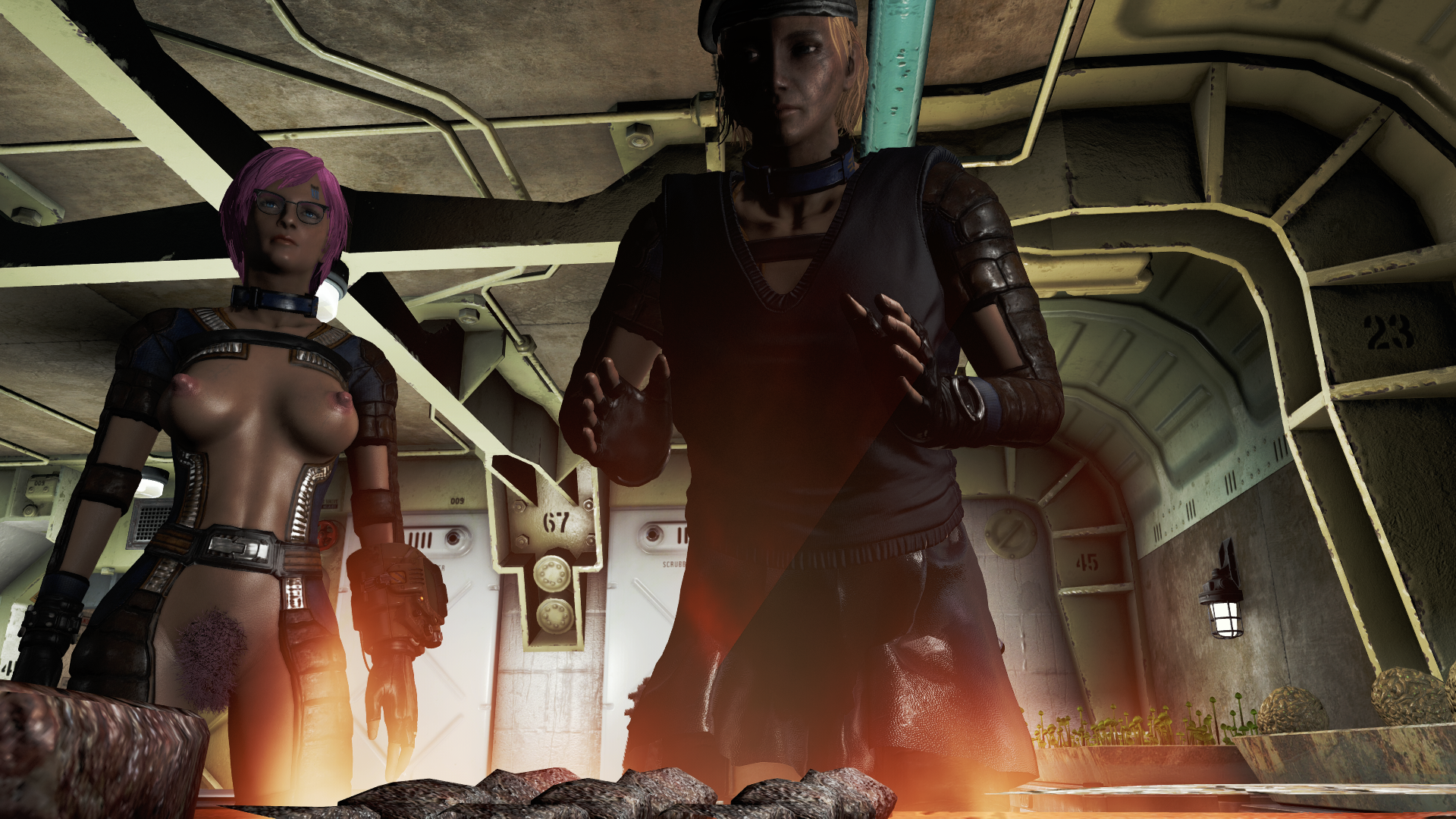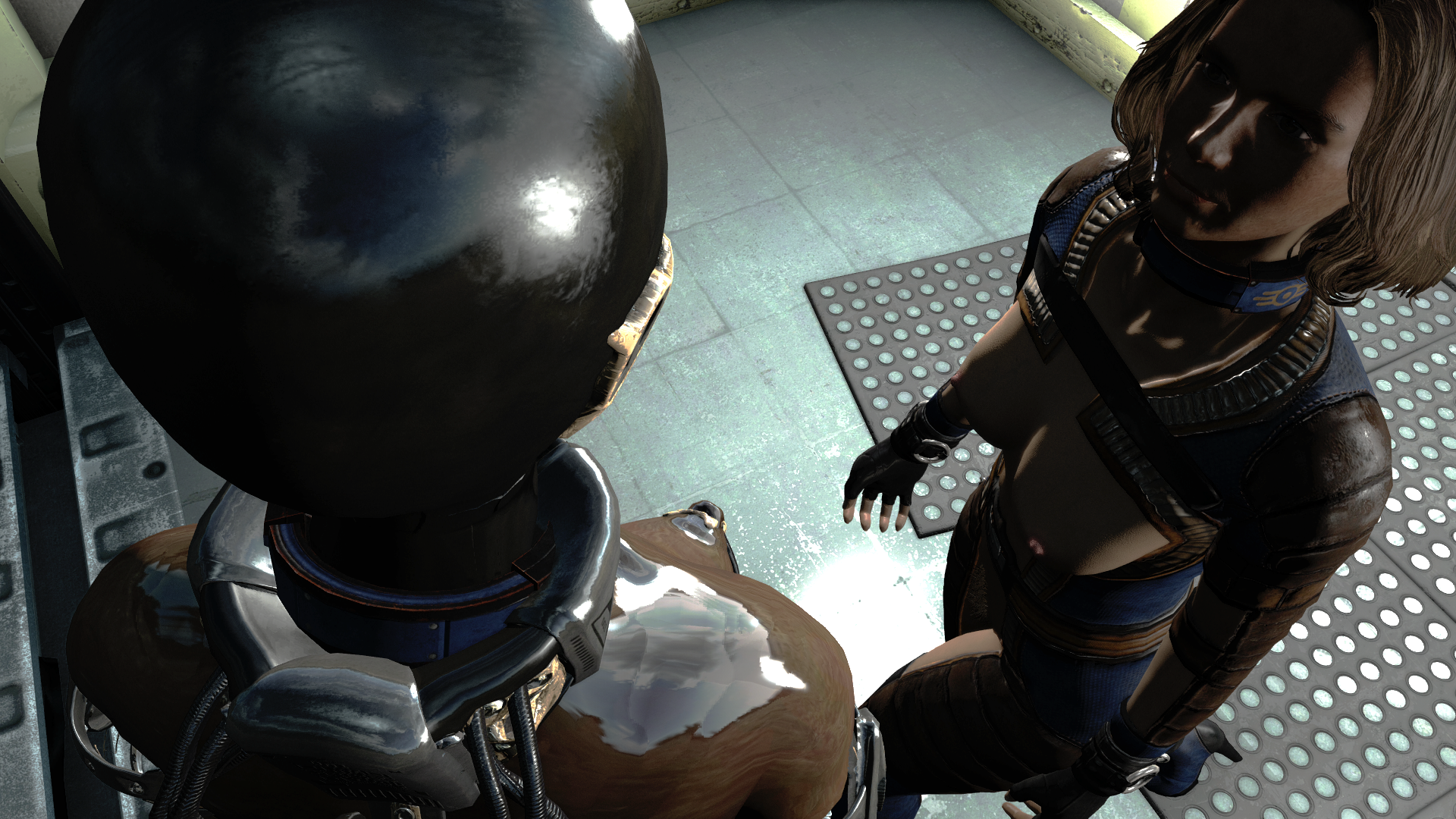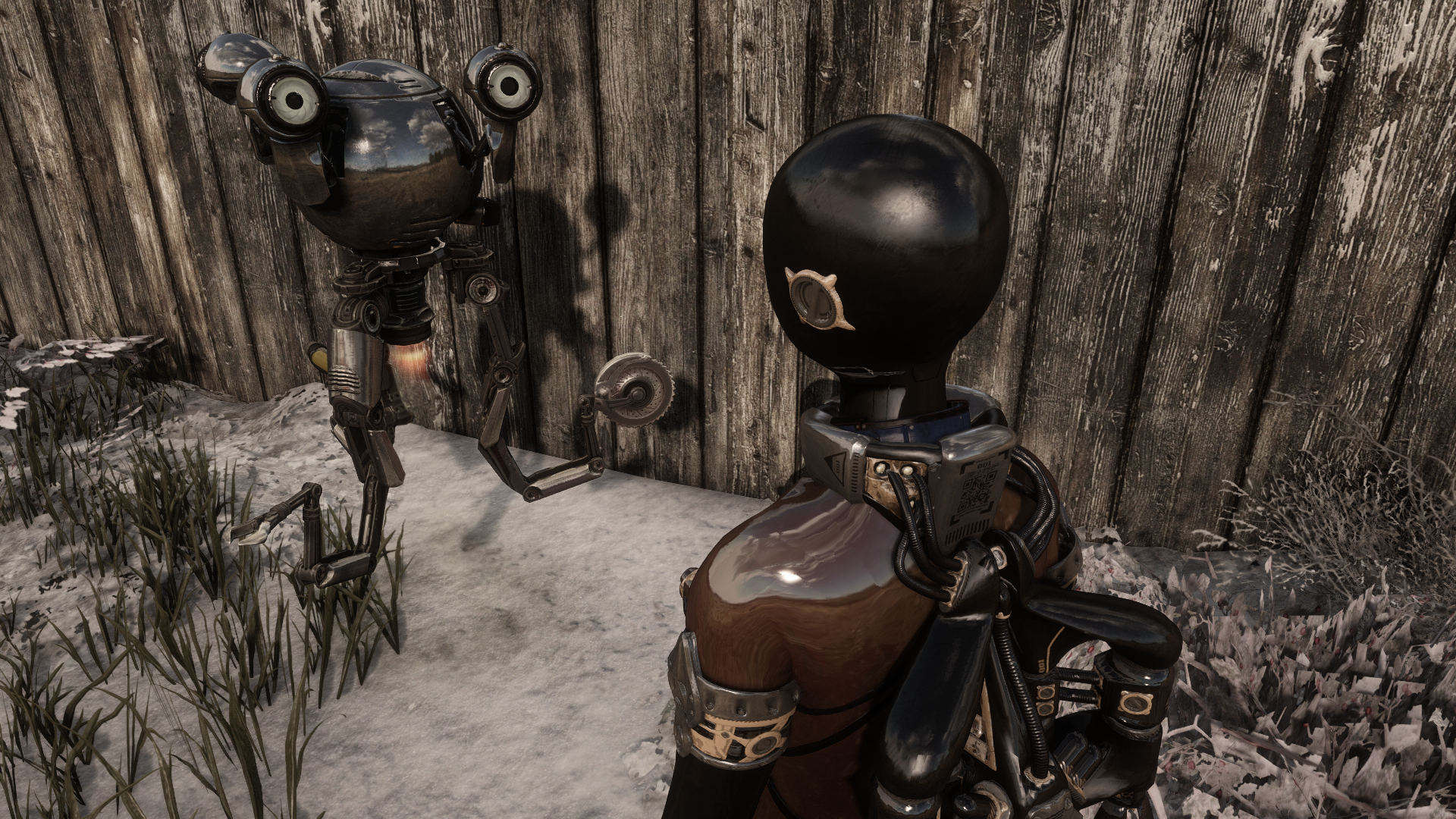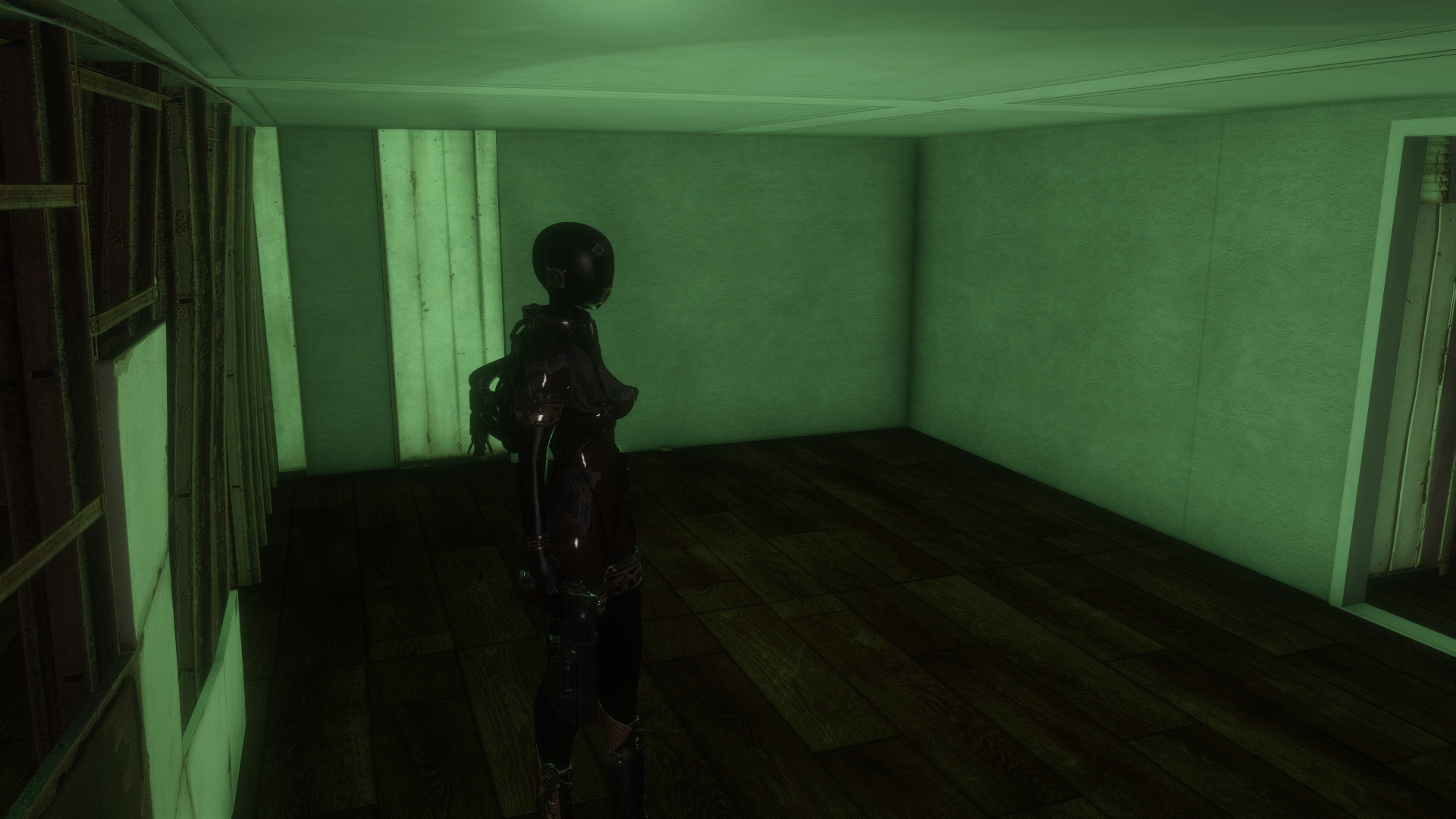Working Holiday (Charley's Story, Chapter 16)
To give credit where credit's due, we did our best to put together a little Christmas dinner when the 25th rolled around. Stef harvested the scrawny products of our failed melon and gourd plots and managed to put together a reasonable approximation of mashed sweet potatoes, while Holly grilled up some of our meat stores along with mushroom steaks. The experience drove home how many things we were missing in terms of our long term supply needs, but it was a good coming-together experience for the whole group.

In the process, I spent some time getting to know Holly and I found out some more about her past. Before they'd come east looking for new horizons, they'd lived at a large settlement called Wolfburg. Before the war it'd been a resort complex on the edge of Fitchburg, and it had managed to ride out the initial attacks despite the Chinese dropping a small nuke directly on the Fitchburg airport. Holly and Stef's family, the Flemings, had been involved with the settlement's politics for generations, and Holly had looked set to take over as sheriff of Wolfburg when everything had went sideways.
As she told the story, Wolfburg's situation had been getting less tenable year by year, as trade with southern New Hampshire dried up and raider activity started intensifying. The Wolfburg militia never managed to pinpoint where the raiders were coming from, beyond vague rumors of a big new raider group setting up in the western part of the Commonwealth. Finally, this summer, Wolfburg got hit with an organized, large-scale attack that breached the resort's defenses and caused a huge amount of damage. When radio calls to the Minutemen went unanswered, Stef and Fred decided to go east and try to find somewhere safer to live. Holly, realizing that the game was up, came with them, and they all left Wolfburg behind once and for all.
I asked her about the Minutemen - Blae Abernathy had also mentioned them and it sounded like they were significant to affairs in the Commonwealth. She agreed with me on that assumption, and asked me if I wanted the short version or the long one. Seeing as I was just sitting down with a plate of hot food, I asked for the long. I had time to absorb it.
"OK, then to understand the Minutemen you have to understand the state of the Commonwealth a hundred years ago. Compared to points north and south, the Commonwealth actually didn't come out of the war too badly. For whatever reason, the Chinese nukes missed a lot of the cities. The way my grandfather told it, the American navy was actively fighting their ships off the coast and many of them couldn't get off good shots. That, and I've heard that there was some kind of secret weapon out in the Glowing Sea called 'Sentinel' that protected Boston and Salem."
"The Glowing Sea?" I asked.
"Oh, that's a whole other story, but you know the glow on the horizon to the south? That's it. But anyway, yeah, the cities didn't get nuked directly, but everything still fell apart. Raiders, looters, communist agents, all kind of bad folks everywhere. The people who survived all holed up in fortified spots like Diamond City and Quincy. And for a long time, it was just a non-stop fight for survival. At first, just against other people, but about a hundred years ago, Super Mutants started showing up in numbers. Super Mutants, and Deathclaws too. A lot of settlements collapsed, and even Diamond City was pushed right to its limit."
"But then the Minutemen showed up. A honest to goodness army, with good weapons, better leadership, and a hell of a message: uniting the Commonwealth and restoring at least one little corner of America. They broke the seige of Diamond City in 2180, and then they spent years clearing trade routes up and down the coast, even inland as far as Natick. Things were really looking up, and by the '30s, people were seriously talking about setting up a government for the whole Massachusetts Bay area. And then they did it, for a while at least, until the Massacre. See, there was a Synth in the Commonwealth Provisional Government council, one of the skin jobs that looks like a real person. And it killed everyone. The leaders of every major settlement died that day, and from there everything started to go downhill."
"The Minutemen tried damn hard to hold things together, and they almost seemed to be turning the tide, until the Castle got overrun by mirelurks. It wasn't just the end of the Minutemen's command staff and a huge part of their armory, the new mirelurk hive cut the trade route from Diamond City to Quincy and Jamaica Plain, which hit both sides of the route really hard. Still, the Minutemen held on for a long time, the better part of 40 years, just slowly losing ground a little bit at a time. Until last year, at least. I don't know what happened, but things started to fall apart fast. By last winter, radio contact with Minutemen HQ was sporadic at best, and like I told you, when the raiders hit Wolfburg this summer, no one answered our distress call, not even an acknowledgement. I hate to say it, but I think the Minutemen are gone for good."
That was rotten news. A force like the Minutemen that could coordinate defense between more than one settlement was exactly what the Commonwealth needed right now, and it seemed like I'd come out of the vault a century too late. I told Holly about when I'd observed in terms of signs of failed settlements, and she wasn't surprised. This whole area, she theorized, was being taken over by raiders who were just organized enough to respect each others' little slices of territory but who didn't have the skill to preserve anything. They were probably looting all the little settlements, then squandering the spoils so they had to keep repeating the cycle of destruction
We chatted some more, eventually looking in the Ainsleighs into the conversation too, and eventually the conversation turned to getting ready for the spring. We all agreed that we wanted to move into Sanctuary Hills when the snow cleared, but now I was thinking that we needed to prepare our little village in advance. If raiders really were getting more bold, they were going to come out in much greater numbers when the snow cleared - they'd be hungry and desperate for supplies if they wasted them over the winter the way Holly suggested - and if we got caught trying to build walls and defenses right when they rolled in, all that work wasn't going to do us any good.
We talked it through and, in the end, I agreed to spend at least two days each week first building a perimeter wall and then reinforcing and weatherproofing some of the houses the way I'd done with my own house. On more moderate days, some of the rest of the group would come out to help me, but for the most part I'd be on my own - though Winter did agree to start training on the power suit so she could work some shifts also.
My first order of business was actually going to be scavenging more materials. We decided as a matter of strategy to not move any of the material stores from the vault back to the Sanctuary Hills Workshop, lest it get stolen from between shifts. Keeping those reserves in the vault would serve as an insurance policy, too, in case any emergency needs came up that had significant material requirements. With this in mind, I suited up and set to work refilling the outdoor Workshop. While I was getting ready, Winter told me about a breakthrough she'd made - she'd edited the firmware on one of the Neural Sentries to interface with the body monitoring systems on the power suit. It meant that while I was out working, I could still benefit from the health maintenance functions of the Sentry.

Just as she'd promised, the modified Sentry dropped right into the armor's own collar ring and the indicator light flashed green in readiness. I can't say that I specifically missed the effect of the Neural Collar, but I understood its value and appreciated the hard work Winter had put in. We chatted a bit more about how she'd done it, and I learned from her that she had been making pretty good progress with her investigation into the Overseer's terminal. She hadn't quite got to the point that she'd classify as a success, but she was pretty comprehensively mapping out the access control structure of the computer system and developing a strategy to circumvent it. I imagine that she would have been quite a troublemaker if she'd lived in the old days.
Down in Sanctuary Hills, I checked in with Codsworth, who reported nothing out of the ordinary, and then set about figuring out how the first iteration of our village would look. I knew that if we attracted more settlers we'd have to expand eventually, but I wanted to start by making a fortified inner area with my house at the center. I'd enclose within it the two houses that flanked my own as well as the house across the street where the Workshop was located. There was another house that completed the square, but it was collapsed in on itself and for now I'd just leave it as-is to be a de facto part of the wall.
And of course, the wall was the first order of business. I wanted to close in those four houses and their yards behind a sturdy enough wall that unwanted guests, be they Ghouls, Raiders, or anything else, couldn't just casually waltz into the neighborhood. Having decided on my general plan, I spent the rest of the afternoon feeding any remaining trash and scraps from that area into the Workshop to build up an initial supply of materials.

The tricky part, a lot like last time, was getting concrete. Call me nostalgic, but I didn't want to tear up the streets for raw materials. They'd survived in relatively good condition, and having the pre-war streets still in place was a big advantage that I wasn't willing to sacrifice. I scoured the neighborhood top to bottom, but other than a couple cinder blocks I'd missed before, I came up with nothing. I could have fenced in the area with chain link, but I wasn't confident that would actually keep out any serious attempt at infiltration. I needed concrete barriers, and that meant I needed concrete.
In the end, it was Connie Abernathy who solved my problems. After a frustrating afternoon of searching, I'd walked to the Abernathy farm in hopes of getting some advice. Far from just making suggestions, Connie offered to broker a deal for me. She explained that she knew a trader named Trash Can Carla who moved goods from Diamond City out to the various farms and settlements. We talked through the logistics and settled on a fair price, and Connie promised she'd have a supply of cement shipped to Sanctuary Hills some time in the next week. She also promised to put in a good word with Carla and find out if she'd be willing to add Sanctuary Hills to her regular route.
I spent the next few days continuing to clean up Sanctuary Hills while I waited for the shipment. Connie proved as good as her promise, and a few days later she arrived, leading a pair of brahmin loaded down with bags of cement mix. I thanks Connie again for her help, and then set to work on the walls. The good news was that not only did the pieces come out looking great - I was even able to tie them a tone of blue to fit with my intended Vault-Tec branding - but the installation kit that the Workshop spat out made installation easy enough for me to mostly manage on my own. The bad news? My experimental first section used up almost all of my cement. I'd need a lot more to continue with this project, and while I had all winter to get this done, I was nevertheless on a deadline.

One of the tasks I'd taken care of while I waited for the shipment of cement was cleaning out the Rosa house. I left the Workshop and most of the tools in the garage alone, but otherwise totally cleaned it out. Using the lessons I'd learned on my own house as a base, I was going to take full advantage of the Workshop's capabilities and restore this house as extensively as possible. If I was happy with the results in the end, I'd give this house to Winter. Fred and Stef could have the two bedroom house on the left of my own and Holly could have the one-bedroom on the right.
Just like with the concrete walls, I was going to have to spend some time getting everything right, but by the time the sun started to set on New Year's Eve, I was able to survey my work so far and feel a real sense of satisfaction. Learning from some of my stumbles with my own house, I'd jacked up the roof slightly and then started installing new framing and drywall in the interior, while at the same time boarding up the outside with the barn wall kits I'd used on my own house. By raising up the original ceiling, I had a lot more room to work with when it came to putting in a new, solid ceiling on the house to keep out the rain. I was pretty confident that when I was done, Winter's house would hold its temperature much better than my own, and I was confident it would serve as a pattern for getting the other two houses fixed up as well.
I'd made it to see the start of 2288, and while a lot of challenges were still standing in my way, I was confident now that we were well on our way to a safer and more secure year ahead.



3 Comments
Recommended Comments